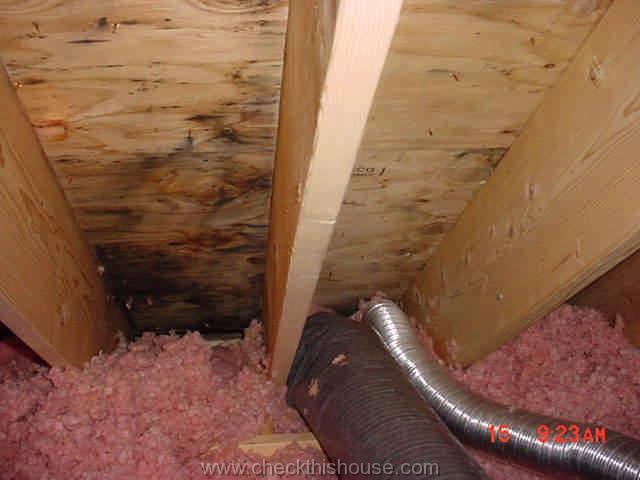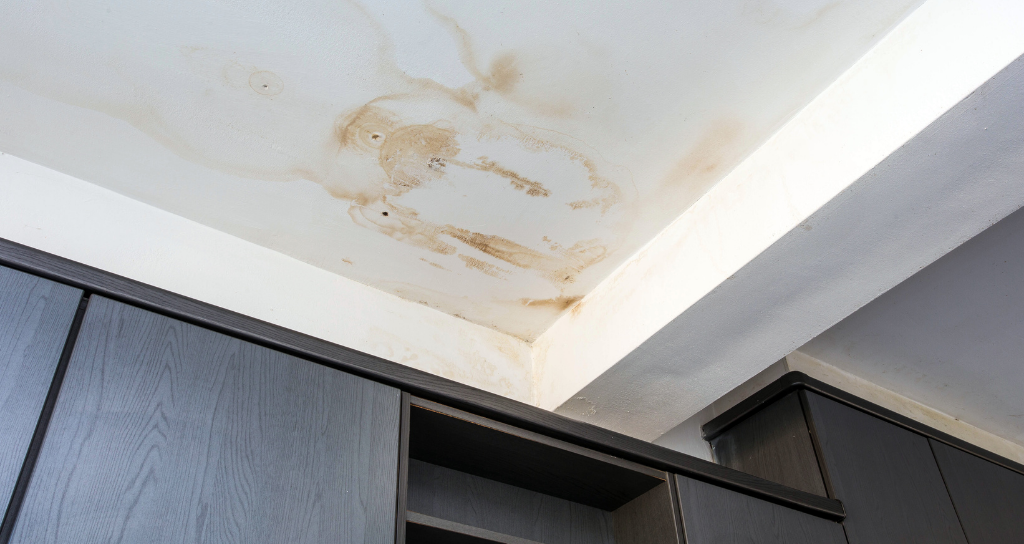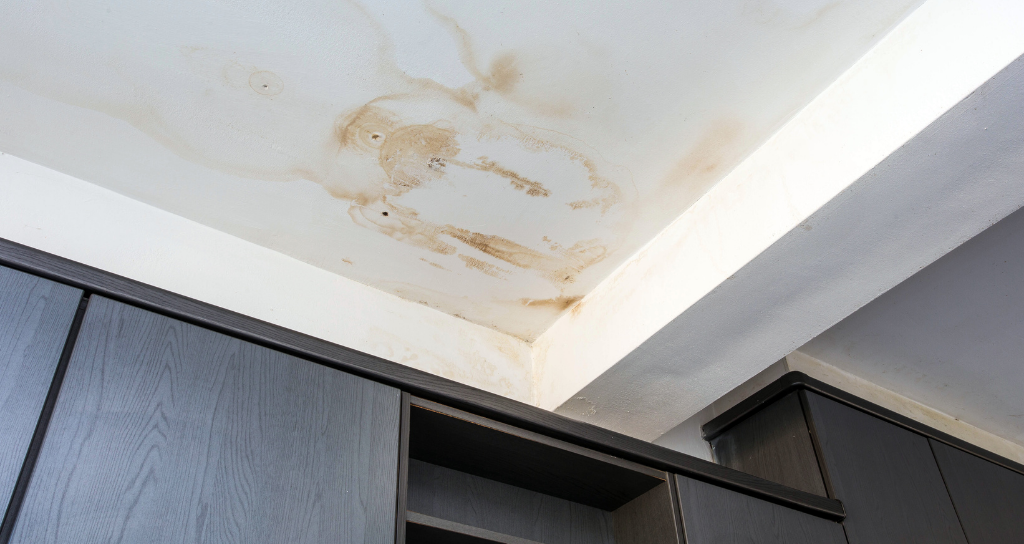In heavy rain, the last thing you want to deal with is a leaking roof. Not only can it cause distress and inconvenience, but it can also lead to potential damage inside your home. Understanding the reasons behind roof leaks during heavy rain is crucial in order to address the issue effectively. By identifying the common culprits, such as damaged shingles, clogged gutters, or inadequate flashing, you can take the necessary steps to prevent further leakage and protect your home from the perils of heavy rainfall.
Common Causes of Roof Leaks
Damaged or Missing Shingles
One of the most common causes of roof leaks is damaged or missing shingles. Over time, shingles can become cracked, curled, or broken due to age, weather exposure, or poor installation. When shingles are damaged or missing, they no longer provide a tight seal against water infiltration, leading to leaks during heavy rain. It is important to inspect your roof regularly and replace any damaged or missing shingles promptly to prevent further water damage.
Clogged Gutters or Downspouts
Clogged gutters and downspouts can also contribute to roof leaks during heavy rain. When debris such as leaves, twigs, or dirt accumulate in the gutters, they can block the flow of water, causing overflow. This overflowing water can then seep under the roof’s edge and cause leaks. Regular maintenance, including cleaning your gutters and downspouts, is crucial to ensure proper water drainage and prevent roof leaks.
Cracked Flashing
Flashing refers to the material used to seal the gaps and joints in a roof, such as those around chimneys, skylights, or vents. If the flashing becomes cracked or damaged, it can no longer effectively prevent water from entering these vulnerable areas. As a result, heavy rain can lead to leaks around these openings. Regular inspections should be carried out to identify any cracks or damage in the flashing and have them promptly repaired.
Faulty Skylights
Although skylights provide natural light and aesthetic appeal to a home, they can also become a common source of roof leaks if improperly installed or maintained. Improperly sealed or damaged skylights can allow water to seep into the roof during heavy rain, leading to leaks and water damage. It is essential to ensure skylights are adequately sealed and regularly inspected to prevent any potential leaks.
Improperly Sealed Valleys
Valleys are the areas where two roof planes intersect, and they are particularly susceptible to leaks if not properly sealed. Improper sealing or degradation of the sealant in valleys can result in water penetrating through the roof during heavy rain. Inspecting the valleys and maintaining proper sealing is crucial to prevent leaks, as water pooling in these areas can cause significant damage to the roof and underlying structures.
Inadequate Roof Slope
The slope of a roof plays a vital role in ensuring proper water drainage. An inadequate roof slope can lead to water pooling on the roof surface and increasing the risk of leaks during heavy rain. If your roof has a low slope or areas that do not adequately drain water, it is necessary to address this issue promptly. Consulting with a professional roofer can help determine the best course of action, which may include adjusting the roof slope or installing additional drainage systems.
Poorly Installed Roofing
In some cases, roof leaks occur due to poor installation of roofing materials. Faulty installation can lead to gaps, improper sealing, or inadequate attachment of shingles, underlayment, or flashing. Over time, these installation defects can result in leaks during heavy rain. It is essential to hire experienced and qualified roofers who follow industry best practices to ensure proper installation and minimize the risk of future leaks.
Condensation
Condensation can also contribute to roof leaks, especially in areas with high humidity or inadequate ventilation. When warm, moist air comes into contact with cooler surfaces, such as the underside of the roof or attic, it can condense and form droplets of water. Over time, this moisture can lead to leaks and water damage. Proper insulation and ventilation are essential to prevent condensation-related roof leaks.
Ice Dams
In colder climates, ice dams can be a common cause of roof leaks during heavy rain or snow. Ice dams occur when snow on the roof melts and refreezes near the eaves, forming a barrier that prevents melted snow from properly draining. The trapped water can then seep under shingles, causing leaks. Proper attic insulation, ventilation, and sealing air leaks can help prevent ice dams and subsequent roof leaks.
Structural Damage
Roof leaks can also occur due to structural damage, such as sagging or settling of the roof deck, compromised roof supports, or damage to the underlying structures. Structural damage can make the roof more vulnerable to leaks during heavy rain. Regular inspections and maintenance can help identify any structural concerns and address them promptly to prevent further damage.

This image is property of assets.fixr.com.
Identifying Roof Leaks
Interior Inspection
To identify the causes of roof leaks, start with an interior inspection. Look for water stains on ceilings or walls, as these can indicate the presence of a roof leak. Carefully inspect areas where water stains are present to pinpoint the exact location of the leak. Additionally, be on the lookout for signs of mold or mildew growth, as excessive moisture from a roof leak can create an ideal environment for their development. If you notice any dripping or pooled water, it is a clear indication of an active roof leak that requires immediate attention.
Exterior Inspection
An exterior inspection is necessary to identify visible signs of roof damage that may contribute to leaks. Look for damaged or missing shingles, as well as any signs of lifting, curling, or cracking. Check the condition of the flashing and caulking around chimneys, skylights, and roof vents, as damaged or deteriorated flashing can be a potential cause of leaks. Additionally, inspect the skylights or roof vents for signs of damage or improper installation.
Roof Surface Examination
A thorough examination of the roof surface can help identify any visible holes, punctures, or other damage that may lead to leaks. Look for any areas where the roof material appears to be compromised. Pay special attention to chimney or vent openings, as these areas are prone to leaks if not properly sealed or if the flashing is damaged. Additionally, check for loose or displaced shingles, as they can allow water to penetrate the roof’s underlying layers.
Attic Examination
Inspecting the attic is crucial in identifying roof leaks, as it allows you to see the underside of the roof and detect any signs of water intrusion. Look for water stains or dampness on the attic ceiling or walls, as they can indicate the presence of a roof leak. Carefully examine the attic insulation for signs of wetness or compacted areas, as these can suggest a leak above. Additionally, check for any sagging or bowing of the roof deck, as it may signal structural damage or excessive weight from water intrusion.
Water Testing
In some cases, conducting water testing can help confirm the source of roof leaks. One method is to simulate rainfall by using a hose to spray water on different sections of the roof while having someone inspect the interior for any signs of water leakage. Observe if any areas show signs of water penetration and trace the route of leakage to determine the entry point. However, it is crucial to exercise caution when carrying out water testing, as it can be dangerous and may cause further damage if not performed correctly.

This image is property of eliteroofingandconsulting.com.
Taking Precautionary Measures
Regular Roof Maintenance
Regular roof maintenance is crucial to prevent roof leaks and ensure the longevity of your roof. Schedule annual inspections with a professional roofer to identify and address any potential issues before they escalate. Routine maintenance may involve removing debris from the roof surface, cleaning gutters and downspouts, and inspecting and repairing any damaged or deteriorated roofing materials.
Keeping Gutters and Downspouts Clean
Regularly cleaning gutters and downspouts is essential for proper water drainage and to prevent roof leaks. Inspect and remove any accumulated leaves, twigs, or debris from the gutters to ensure unobstructed water flow. Make sure downspouts are clear and direct water away from the foundation of the house. Consider installing gutter guards to minimize debris buildup and reduce the frequency of gutter cleaning.
Repairing or Replacing Damaged Shingles
Promptly repairing or replacing damaged shingles is crucial to prevent roof leaks. Inspect the roof surface regularly and identify any shingles that are cracked, broken, or missing. Replace them promptly to maintain the integrity of the roof and prevent water infiltration. If you are unsure how to properly replace shingles, it is advisable to consult a professional roofer to ensure proper installation.
Proper Flashing Installation
Proper installation of flashing is essential to prevent leaks around openings such as chimneys, skylights, or roof vents. Work with a qualified roofer who follows industry best practices to install or repair flashing. Regular inspections should be carried out to identify any cracks or damage in the flashing and have them promptly repaired to maintain a watertight seal.
Installing Quality Skylights
If you have skylights, ensuring their proper installation and maintenance is crucial to prevent roof leaks. Invest in high-quality skylights that are specifically designed to prevent leakage. Work with experienced professionals to ensure proper installation and sealing. Regularly inspect the skylights for any signs of damage or degradation and address any issues promptly.
Addressing Roof Slope Issues
If you notice inadequate roof slope or areas that do not adequately drain water, it is essential to address this issue promptly. Consult with a professional roofer to evaluate the slope of your roof and determine the best course of action. Properly adjusting the roof slope or installing additional drainage systems can prevent water pooling and minimize the risk of roof leaks.
Hiring Professional Roofers
When it comes to roof leaks, it is often best to leave the job to professionals. Hiring experienced and qualified roofers ensures that roof inspections, repairs, or installations are done correctly and safely. Professional roofers have the expertise and knowledge to identify and address the root causes of roof leaks, ensuring long-lasting solutions and minimizing the risk of future leaks.

This image is property of vertecroofing.com.au.
When to Call a Professional
Complex or Extensive Leaks
If you are facing complex or extensive roof leaks that you cannot address on your own, it is advisable to call a professional roofer. They have the expertise and specialized equipment to identify and repair the underlying causes of complex leaks. Professional roofers can also provide long-term solutions to prevent future leaks and ensure the integrity of your roof.
Structural Damage
Roof leaks caused by structural damage require immediate attention from professionals. Structural damage can compromise the safety and stability of your home, and it is essential to have it properly assessed and repaired by qualified experts. They will determine the extent of the damage and recommend the necessary repairs to restore the structural integrity and prevent further leakage.
Safety Concerns
If you encounter safety concerns while inspecting or attempting to repair your roof, it is crucial to prioritize your well-being and call a professional roofer. Working at heights can be dangerous, especially during adverse weather conditions or on steep roofs. Professional roofers have the necessary safety training, equipment, and expertise to handle roof-related tasks safely and efficiently.

This image is property of eliteroofingandconsulting.com.
Conclusion
Roof leaks can be a significant problem, leading to damage to your home and belongings if left unaddressed. By familiarizing yourself with the common causes of roof leaks and learning how to identify and address them, you can take proactive measures to prevent leaks and maintain the integrity of your roof. Regular inspections, prompt repairs, and professional assistance when needed are key to ensuring a watertight and resilient roof that can withstand heavy rain and protect your home for years to come.

This image is property of www.midshoreexteriors.com.
